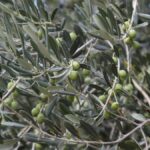Scientists Swedes have developed a new variety of rice capable of reducing its environmental impact, while increasing performance. The variety SUSIBA2 presents an impressive decrease in 70% of emissions methane, a particularly harmful greenhouse gas. Since the rice fields contribute to 12% of global methane emissions, this progress could offer a viable solution in the face of population growth and environmental challenges.
Information essential
- Swedish scientists are developing a new variety of rice with emissions of methane reduced by 70%.
- The variety SUSIBA2 presents a yield almost doubled compared to the world average.
- Emissions of methane of rice fields responsible for 12% of global emissions, increasing with population growth.
- Government support is crucial for the adoption of these new varieties and the reduction of environmental impact.
Swedish scientists reduce the environmental impact of rice
A group of Swedish researchers recently made a fundamental advance in the fight againstenvironmental impact of rice, an essential crop for billions of people around the world. Thanks to their work, a new variety of rice has been developed that allows for the reduction of methane emissions up to 70%. This finding is particularly relevant considering that rice fields represent approximately 12% of global methane emissions, a greenhouse gas with devastating effects on our planet.
A revolution in rice production
The yield of this new rice variety, called SUSIBA2, is almost double the world average. It is crucial to highlight that this improved production does not lead to an increase in methane emissions, making it a sustainable solution faced with the growing need to respond to the food needs of a constantly increasing world population.
Key mechanism of methane emissions
The researchers identified a key mechanism linked to the root exudates of this new rice variety, which influence methane-producing microbes in the soil. By genetically modifying rice to reduce emissions, SUSIBA2’s mechanism presents itself as a significant scientific breakthrough. Compared to the Nipponbare variety, the data clearly indicates that SUSIBA2 is able to produce less methane while maintaining optimized yield.
Development of LFHE for better production
Furthermore, the development of a new type of fertilizer, designated LFHE, which has low levels of fumarate while producing a large amount of ethanol, could play a central role in this optimization. Tests conducted in China have shown that it is possible to reduce methane emissions while ensuring that crop productivity is not compromised.
Soil treatment solutions
Soil treatments using ethanol and oxantel also offer a 60% emissions reduction potential. These innovations could transform agricultural practices and offer a responsible alternative to traditional methods that damage the environment.
Need for government support
In order for these new rice varieties and cultivation techniques to be adopted on a large scale, a government support it is essential. Governments must facilitate the implementation of these techniques to encourage farmers to switch to more sustainable farming methods.
A solution for food safety
Ultimately, these researches offer a potential solution to reduce the environmental impact of rice cultivation without compromising food safety. While the pressure to produce more food increases with population growth, collaborations with companies can also foster the development of new products fertilizers innovative, necessary to face this agronomic challenge.
















